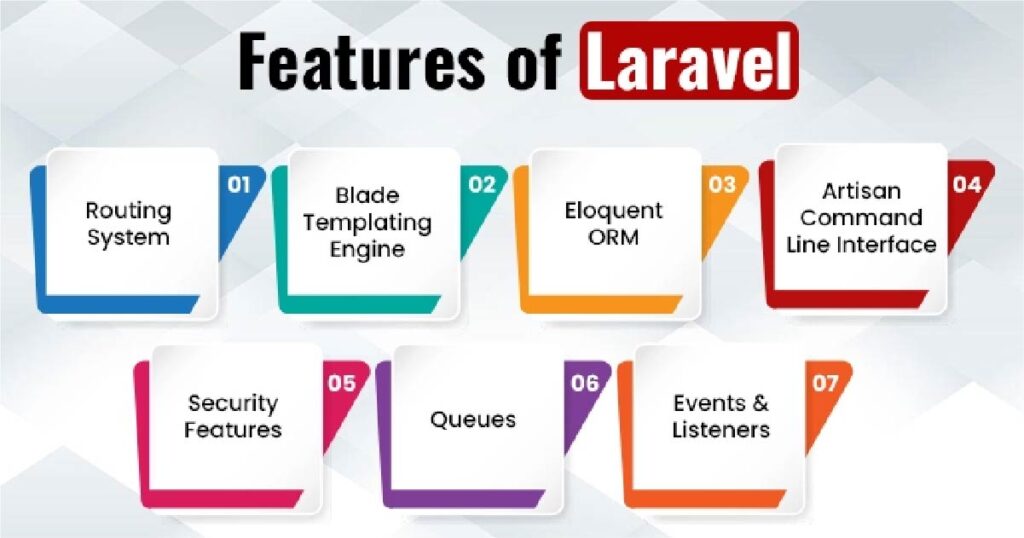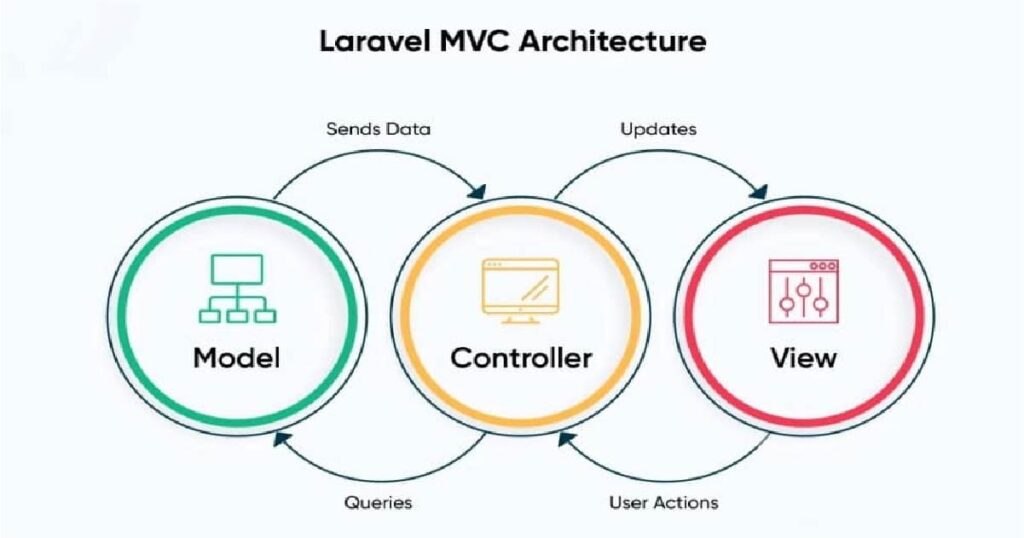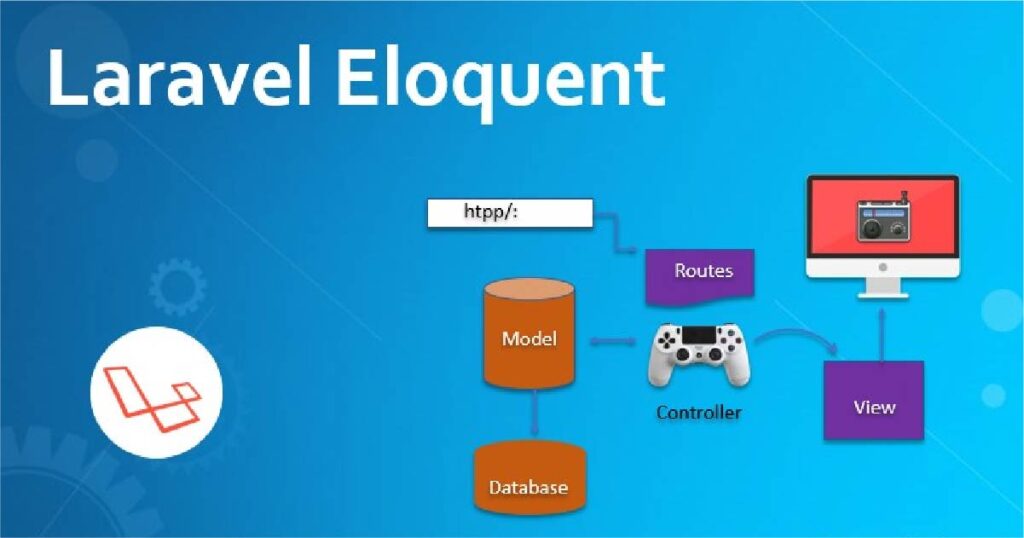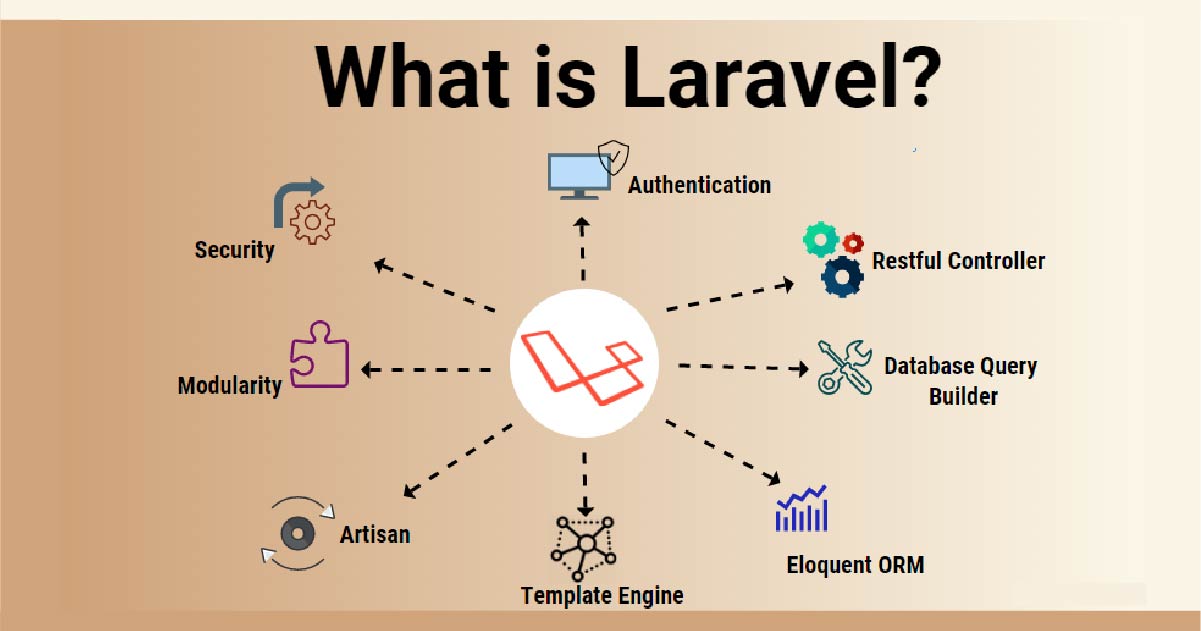Introduction
Gaining popularity in today's job market is Laravel, a popular PHP framework. This is as a result of its elegant syntax, robust features, and Model-View-Controller (MVC) architecture. The need to use Laravel to create scalable, effective, and maintainable online apps has increased the demand for professionals with Laravel expertise. However, just because businesses need such professionals does not mean just anyone can get the job. Candidates have to go through the interview process after being shortlisted. Therefore, being thoroughly prepared for the interview is a must for beginners and seasoned experts alike and this is where this article comes in. It offers insights into the top Laravel interview questions, ranging from basic concepts to advanced features. These Laravel interview questions have been carefully selected to emphasize the significance of practical experience, real-world application, and ongoing learning in addition to reflecting the ever-evolving field of web development. Hiring managers and interviewers need this tool to evaluate candidates' level of experience with Laravel projects. While candidates will need it to prepare themselves to ace their interviews.
Basic Laravel Interview Questions
1. What is Laravel?
This is one of the frequently asked Laravel interview questions. Laravel is an open-source PHP framework designed to simplify web development. It has an MVC architecture, a routing system, an Eloquent ORM, a Blade templating engine, an Artisan command-line interface, middleware, Composer integration, task scheduling, security features, and a friendly community. It is a well-liked option for creating dependable and scalable web applications because of its sophisticated syntax and contemporary development concepts. The Model-View-Controller (MVC) pattern, which is followed by Laravel's architecture, ensures code flexibility and maintainability.
2. What are the features of Laravel?

With features like Eloquent ORM, Blade templating engine, Artisan Console, middleware, routing, dependency injection, database migrations, testing support, authentication, authorization, task scheduling, Eloquent relationships, Laravel Mix, Laravel Horizon, and Laravel Nova, Laravel is a well-known PHP web framework. Its elegant syntax, expressive features, and developer-friendly tools make it a popular choice for building web applications. Laravel's commitment to modern development practices, robust community support, and clear documentation make it a popular choice for web application development.
3. What is the MVC architecture in Laravel?

Laravel's Model-View-Controller (MVC) architecture is a structured approach to web application design. Laravel's Model-View-Controller (MVC) architecture is a structured approach to web application design. MVC separates the application into three main parts that is the Model, View, and Controller with each component having a specific role, contributing to the codebase's clarity, maintainability, and scalability. The Model represents the data layer, while the View presents the user interface. By processing user input and forwarding it to the View, the Controller serves as a go-between for the Model and the View. Benefits of the MVC architecture include maintenance, scalability, code reuse, and concern separation.
4. How does Laravel handle routing?
Laravel simplifies the process of defining and handling routes in web development, providing a clean and expressive way to map URLs to corresponding controllers and actions. For web routes, the routing system is defined in the files routes/web.php and routes/api.php, respectively. Routes with parameters, controller actions, middleware in routes, grouping of routes, and route caching for performance optimization can all be defined with Laravel. Understanding and effectively using Laravel's routing system is crucial for building well-structured and navigable web applications.
5. Explain what a middleware in Laravel is.
Middleware in Laravel is a crucial tool for developers to filter and manipulate HTTP requests, handling tasks like authentication, logging, and CORS. The Artisan command can be used to create it, and it can be registered globally or only to particular routes or groups. Routes in web.php or api.php files can apply middleware, which can then be executed sequentially. It enhances the maintainability and reusability of code.
Intermediate Laravel Interview Questions
6. What is Eloquent in Laravel?

An Object-Relational Mapping (ORM) system in Laravel called Eloquent provides a sophisticated PHP syntax for working with databases. In addition to supporting relationships like One to One, One to Many, Many to Many, and Polymorphic relationships, it offers expressive query builder methods, streamlines CRUD operations, and offers mass assignment protection. Additionally, Eloquent maintains records' timestamps automatically, freeing up developers to concentrate on creating features and applications.
7. What is Blade in Laravel?
Blade is a templating engine in Laravel, a PHP framework, that provides a concise and powerful syntax for writing views in Laravel applications. It aims to make view files more readable and expressive while facilitating the creation of dynamic, reusable templates. he ability to create reusable, self-contained view components using Blade components, familiar control structures like @if, @else, @elseif, @foreach, and @for, directives like @extends, @section, @yield, and @include, and simple syntax are among the key features. Blade improves the readability and structure of Laravel applications by making the process of developing dynamic and maintainable views easier.
8. How does Laravel handle database connections and configurations?
Laravel is a flexible and straightforward tool for managing database connections and configurations. Driver, host, database name, username, and password are among the configuration options for different database connections that are contained in its main configuration file, config/database.php. MySQL, PostgreSQL, SQLite, and SQL Server are among the multiple connections that Laravel supports. The.env file is used to manage configurations unique to each environment. The env() function allows dynamic configurations based on the environment, making the application highly configurable and adaptable to various deployment scenarios.
9. What is Composer in Laravel?
A PHP dependency manager called Composer makes it easier to install, update, and enable autoloading for PHP libraries and packages in a project. In order to guarantee compatibility and resolution, it monitors and controls dependencies specified in a composer.json file. In Laravel development, composer is used for new project creation, dependency management, autoloading, autoloader optimization, updating dependencies, and project-specific tasks with composer scripts.
10. What are service providers in Laravel?
To register and bootstrap components and services in an application, service providers are crucial in Laravel. They register services, such as database drivers and caching systems, and perform bootstrapping tasks. Service providers can publish configuration files, register aliases, and be deferred with Laravel. They can also register Artisan commands and enable database migrations and factories. Understanding and creating service providers is crucial for Laravel's flexibility and extensibility.
Advanced Laravel Interview Questions
11. Discuss Laravel's service container and dependency injection.
Laravel's service container and dependency injection are key concepts in the framework, enhancing its flexibility, maintainability, and testability. Developers can bind classes and have them resolve automatically by using the service container, which serves as a registry for classes and their dependencies. It facilitates contextual binding, aliases, and singleton instances. Dependency injection promotes better code organization, flexibility, and decoupling, making the code more maintainable and modular. Often called an Inversion of Control (IoC) container, the service container serves as a centralized repository for managing dependencies.
12. How does Laravel handle database transactions?
Laravel is a powerful tool for handling database transactions, ensuring data integrity and consistency. It supports closure syntax, methods for beginning, committing, and rolling back transactions, and supports multiple transaction isolation levels. Read Uncommitted, Read Committed (default), Repeatable Read, and Serializable are some of these levels. Developers can select the appropriate level of isolation based on the requirements of their application, as not all database systems support all levels.
13. Discuss the Laravel Broadcasting feature.
Real-time WebSocket communication between the server and clients is made possible by the Laravel Broadcasting feature. In Laravel applications, it enables real-time updates and interactions, especially for dynamic features like chat apps, collaborative editing, and live notifications. Broadcast Drivers, BroadcastServiceProvider, and events form the foundation of Laravel Broadcasting. It is utilized for interactive features, chat programs, real-time updates, and live notifications. It provides scalability, flexibility for the driver, enhanced user experience, efficiency, and simplified implementation. Applications that are dynamic, collaborative, or notification-driven will find it especially helpful.
14. What is reverse routing in Laravel?
With Laravel, reverse routing enables the creation of URLs or paths for designated routes according to their name or unique identifier. This feature promotes maintainability and flexibility by decoupling URLs from actual route implementations. It can be used in views or controllers, and in Blade views, generating URLs without manual construction.
15. What is Laravel Dusk?
A browser automation tool called Laravel Dusk makes web application testing easier. Its default browser is Google Chrome, which enables testing without a graphical user interface. Database transactions, automated setup and teardown, screenshot taking, and database seeders are further features that are supported by Dusk. It provides Artisan commands for common testing tasks and integrates with Laravel's test suite. It is particularly useful for testing complex JavaScript interactions.
Laravel 8 - Specific Laravel Interview Questions
16. What are the key features introduced in Laravel 8?
A number of significant features are introduced in Laravel 8, such as Laravel Sail, enhanced job batching, model factory classes, rate limiting, dynamic Blade components, Laravel Jetstream, a strong application scaffolding, and enhancements to the Artisan command-line tool. It also introduces a job model, model factory classes, and improved migration squashing, enhancing code readability and maintainability.
17. Explain the model factory classes in Laravel 8.
Model factory classes, an object-oriented and structured method of defining and structuring model factories, are a feature of Laravel 8. These classes are defined in the database/factories directory within specific factory classes. Better organization, simpler maintenance, consistent syntax, enhanced IDE support, and factory state customization are all made possible by them. These classes are particularly useful for large-scale applications with multiple models and factories, as they provide a more flexible way to generate fake data for testing and database seeding.
18. What is the Laravel Sail package, and how does it simplify the setup of local development environments?
Docker containers are integrated into Laravel Sail, a lightweight command-line interface (CLI) that makes setting up local development environments easier. It provides multiple database options, easy setup and configuration, a consistent development environment, pre-configured services, and straightforward CLI commands. The package can be installed using Composer and provides executable commands for initialization, starting, running Artisan commands, accessing services, and stopping the development environment. Developers can now work with Docker more conveniently and consistently thanks to Laravel Sail, which also simplifies container management.
19. What is the Jetstream package in Laravel 8, and how does it enhance the default Laravel authentication scaffolding?
Jetstream is a Laravel package introduced in Laravel 8 to improve the default authentication scaffolding and provide a more feature-rich starting point for building modern web applications. Livewire, Inertia, and Tailwind CSS integration are all included.Support for JavaScript, easier customization, enhanced testability, Tailwind CSS and JavaScript stack configuration, API support, team management, two-factor authentication, and support for profile photos. The jetstream:install Artisan command allows developers to scaffold the required files and components.
20. Discuss the changes made to the task scheduler in Laravel 8.
With an emphasis on avoiding task overlap, Laravel 8 has made a number of enhancements to the task scheduler. Improved task output storage, task mutexes, task frequency locks, task chaining, maintenance mode scheduling, and the addition of an event loop for sequential execution are a few of these. Task frequency locks avoid overlap if a previous task is still in progress, and the event loop guarantees that tasks are completed in the correct order. Task output events enable logging and fine-grained control. The management of scheduled tasks in a variety of scenarios is made easier by these features.
Real-World Scenario- Laravel Interview Questions
21. How would you implement background job processing in Laravel to handle tasks such as sending emails, processing uploads, or any other time-consuming operations?
With the help of Laravel's background job processing feature, time-consuming operations like processing uploads and sending emails can be completed asynchronously, increasing the responsiveness of the application. To put this into practice, take these actions:
1. Create a queue connection in the file your.env.
2. Use the Artisan command to create a job class.
3. Use the dispatch or dispatchNow method to dispatch the job.
4. Use the queue:work Artisan command to set up workers so they can handle the jobs in the background.
5. Use the queue:work output in the console or the Horizon dashboard to keep an eye on the queue status.
6. When dispatching the job, configure delayed jobs by utilizing the delay method.
22. Explain the caching strategies you would use in a Laravel application to optimize performance.
Laravel application performance can be improved by employing various caching strategies at different levels. These strategies include database caching, HTTP caching, and application-level caching. While HTTP caching lowers server load and speeds up page load times, database caching makes use of Laravel's built-in query caching to cache database queries and results. Whereas data caching saves frequently used data and portions of views, application-level caching keeps computed results, configurations, or frequently used data. To prevent processing the same request twice, response caching saves complete responses. Consider strategies for cache invalidation when data changes, profile and analyze cache performance using Laravel Telescope tools, select the right cache driver based on the requirements of the application, and take into account cache-busting techniques for assets in order to maximize performance. Caching and cache invalidation can be balanced to greatly increase the speed of Laravel applications.
23. How would you implement API rate limiting in a Laravel application to prevent abuse and ensure fair usage?
In order to guard against abuse and guarantee equitable use of API resources, Laravel applications must implement API rate limiting. To put this into practice, take these actions:
- Set up the $routeMiddleware property's throttle middleware.
- Set up the options for rate limiting in the $middlewareGroups property.
- Modify the config/api.php configuration file's rate limitation settings.
- To rate limit a route or group of routes, apply the throttle middleware.
- To handle responses that exceed the rate limit, create a language file called resources/lang/en/api.php.
- Use programs like Postman or cURL to test the rate limitation.
Supporting IP-based rate limiting and tailoring rate limiting parameters for various routes or route groups are two more suggestions.
24. What are some of the best practices in coding and problem-solving approaches
To develop maintainable, scalable, and robust Laravel applications, follow best practices in coding and problem-solving. Use meaningful variable and function names, adhere to the Single Responsibility Principle and Separation of Concerns, and follow PHP-FIG PSR standards. Eloquent relationships, dependency injection, and avoiding hardcoding configuration are the keys to effective database queries. For cross-cutting issues, use middleware and version control systems. Use Artisan commands to automate time-consuming chores. For a dependable and efficient development workflow, make use of debugging tools, incremental development, unit and feature testing, documentation, code reviews, and CI/CD pipelines. To stay up to date, coding practices must be reviewed and updated on a regular basis.
25. what are some of the emerging trends in Laravel we should look out for?
The use of Inertia.js and Livewire in conjunction with Tailwind CSS, Laravel Octane for performance, API-driven development, Laravel Nova extensions, Laravel Vapor, microservices architecture, real-time features with Laravel Echo and Pusher, and Laravel packages and ecosystem growth are some of the emerging trends in Laravel. These trends highlight the importance of Laravel's simplicity, flexibility, and adaptability in building dynamic interfaces, enhancing the interactivity of Laravel applications.
Conclusion
Being familiar with the frequently asked Laravel interview questions is a must for candidates to successfully navigate the course of any interview they are called for. The Laravel interview questions in this article cover a wide range of topics. Proficiency with Laravel's nuances, best practices, and the newest features—like those added in Laravel 8—demonstrates a developer's capacity to create reliable and effective online applications. As the Laravel ecosystem develops, keeping up with new developments and constantly improving one's abilities will help one become a skilled and in-demand Laravel developer in the fast-paced web development industry, in addition to helping one ace interviews.



